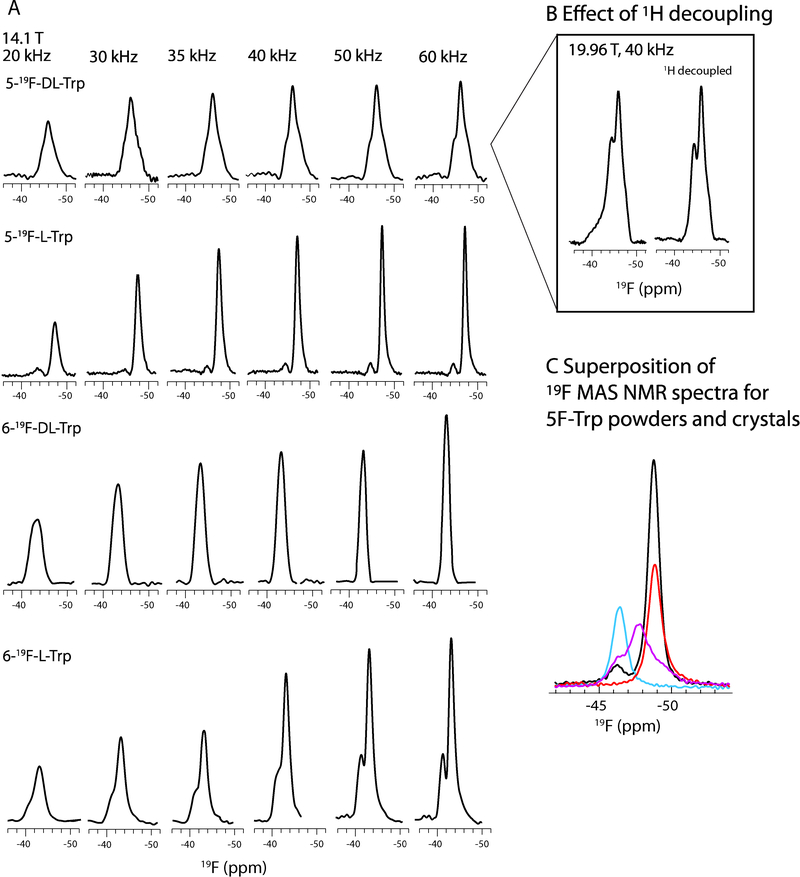Figure 2.
(A) MAS frequency dependence of the linewidth and signal intensity of fluorosubstituted tryptophan crystalline powders (top to bottom): 6F-L-tryptophan, 6F-DL-tryptophan, 5F-L-tryptophan, 5FDL-tryptophan. 1D 19F spectra were acquired at 14.1 T (564.278 MHz 19F Larmor frequency) and MAS frequencies of 20 kHz, 30 kHz, 35 kHz, 40 kHz, 50 kHz, and 60 kHz. (B) For 5F-DL-tryptophan, 19F 1D spectra were also acquired at 19.96 T (800.095 MHz 19F Larmor frequency) and a MAS frequency of 40 kHz, with (right spectrum) and without 1H decoupling (left spectrum). (C) Superposition of the 19F MAS NM spectra for different forms of 5F-Trp (powder vs. crystal). The chemical shift of −46.4 ppm likely corresponds to the monohydrate form.

